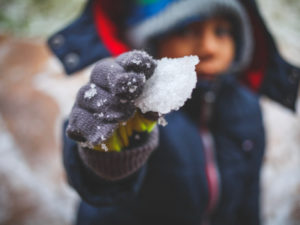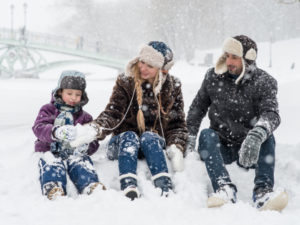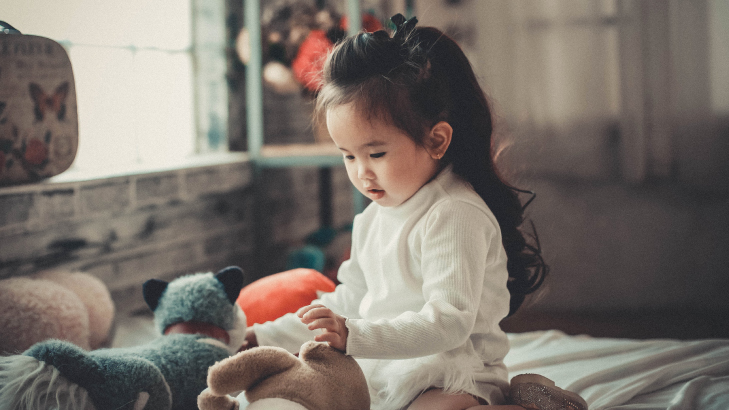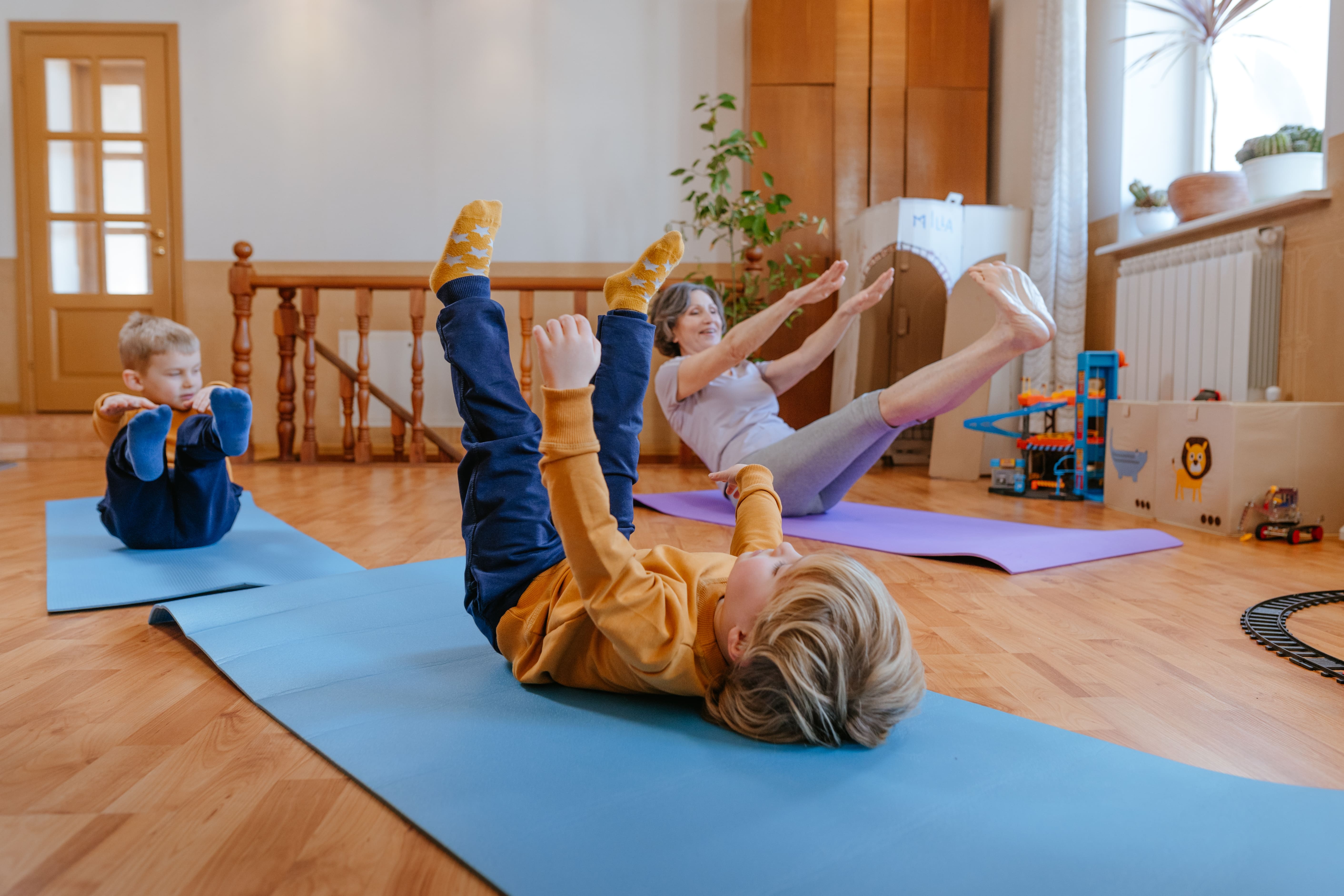Playing outside is important; it gives your children the chance to learn through exploration and discovery. But as parents, it can be nerve-wracking to bring your child into an environment where you do not have as much control as you would like, especially during the winter season when the weather is cold and injury is more probable.
By preparing yourself with the outdoor weather conditions you can ensure your child’s safety while simultaneously enriching their experiences.
Here are some tips to consider before your next outdoor excursion:
1. The Right Clothes Are Everything
Dressing Your Kids for Cold Days

Before you bundle up, be sure to check the weather forecast for the day and factor windchill into your wardrobe considerations. Dress your child in layers so they can remain as warm as possible, while providing them with the opportunity to adjust by removing some layers if they get too warm.
Most body heat escapes through the top of the head, so a warm hat is essential. Mittens will keep your child’s hands very warm, but gloves can do the job as well. If you anticipate your child will be playing in the snow, be sure to select waterproof mittens or gloves to keep moisture from soaking through.
We highly recommend every child wears an insulated winter jacket, warm winter boots, and snow pants to keep them warm on a cold day. Here are some more winter safety tips to keep your child warm in the cold weather:
- Mittens are generally warmer than gloves but keep in mind, many children like to use their fingers during play. In an instance where your child wants to feel the snow directly, provide them with the option of layering their mittens on top of their gloves so they can easily alternate between the two. This way they will still be able to play while avoiding possibilities for frostbite.
- Encourage your child to wear two pairs of socks instead of just one. This will ensure that they stay warm and dry for an extended period, especially during the snowy season.
- Neck warmers or turtle neck warmers are safe alternatives to long scarves that may be a choking hazard if they unexpectedly get caught on something.
- Choose hats or toques that allow for your child’s full visibility and don’t obstruct their eyesight. This will prevent them from injury while walking and running, especially if there are patches of slippery ice on the ground.
- Always keep a second set of clothing at your child’s school or in your car. This way if your child gets cold or wet during an outdoor activity, you can immediately swap them for dry and warm alternatives. Remember: young children are prone to climate sensitivity due to their age and developing bodies.
2. Snowy Situations
Approach Snowball Fights with Caution

In the heat of the excitement, kids may not feel small rocks or pieces of ice hidden in a snowball during a snowball fight. However, if that snowball hits a child in the face it could cause a significant injury. If you are going to sanction a snowball fight, it is best to lay down some ground rules, such as:
- Placing rules around the size of the snow balls permitted. Some children may like to compete by using larger snowballs than their playmates. Although, large snowballs also increase the risk of injury. Instead, make sure there are limits on the size of the snow balls to promote a safer experience.
- Make sure the snow balls are being made from fresh snow. Do not allow children to use twigs, or hardened snow (with ice) to be made into snowballs. This has the potential of causing severe injury if it lands on an unprotected part of the body such as the face or neck.
- Set parameters around the physical space they can use. Do not assume children will know how to intuitively play safe, as they are still learning, evolving and pushing boundaries in general. One simple and effective way to ensure safety of all children is by showing them physical space and making sure they stay a certain distance from the other child/children while engaging in a snow ball fight.
- Set a time limit. Children have limitless amounts of energy to expend. Make sure they have a break in between playtime to ensure they are well hydrated and fuelled before continuing. This will prevent them from become irritable or unruly while playing with others, due to hunger, thirst or fatigue
Also, try to avoid using snow that was resting directly on the ground, and do not use snow from sidewalks, as it might contain gravel. Very wet, slushy snow easily hardens into ice, so limit snowball-making to the more powdery, fluffy snow without an icy crust. And of course, be sure to supervise so you can intervene if something goes sideways.
3. Supervise Snow Fort-Building
Use precaution and supervision when building snow forts

Kids love building spaces to call their own, including snow forts. Building a snow fort is a fun, wholesome, and constructive pass time. However, this hobby could be more dangerous than many parents realize.
There have been several cases of snow forts and tunnels collapsing with children inside. The children are usually old enough to play alone and often end up suffocating under all the snow.
If your child wants to build a snow fort, it is safest to build it without a ceiling. This way, if it collapses, the child will not be trapped. If your family does opt to put a roof on the fort, at least one adult should stay outside the fort supervising, so they can spring into action if anything dangerous happens.
Before your children go out to play in the snow every winter, be sure to stress the potential risks and institute family-wide policies on how to stay safe.
At BrightPath Kids, we strive for our children to engage in outdoor activity and place utmost importance on physical movement. However, safety is always our number one concern. For more information on our childcare services, please visit one of locations by booking a tour.










